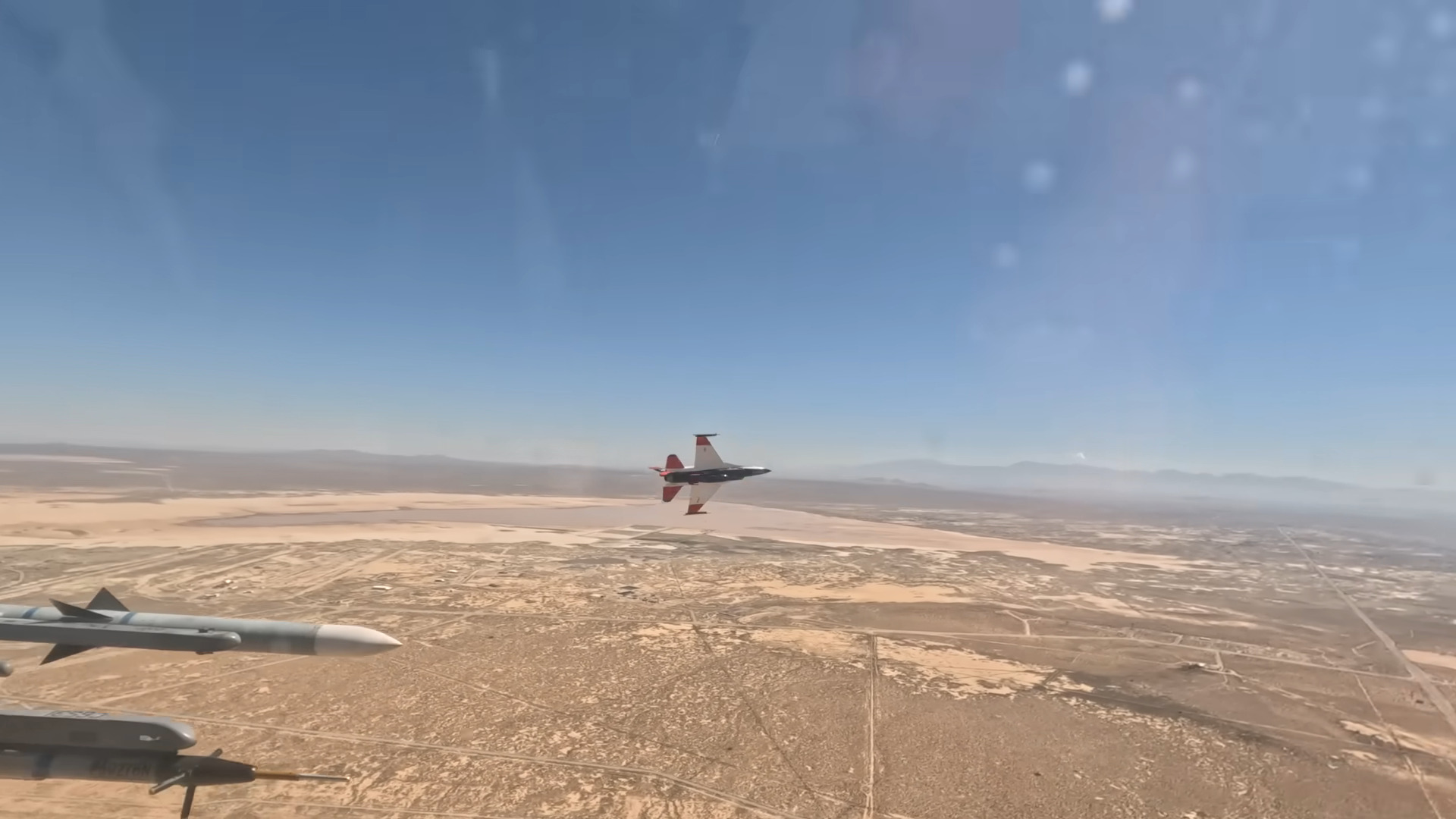
The rise of AI has many wide-ranging implications for the future of the human race, but it's perhaps the potential military uses that raise the biggest causes for concern. It seems we're now starting to see what an AI versus human battle might look like, at least in the skies above us, as the US military has tested an AI-controlled F16 in a dogfight with an actual test pilot—although the results as to who "won" remain unclear.
The catchily named X-62A Variable Stability In-flight Simulator Test Aircraft, or "VISTA" for short, is essentially a modified F16 fighter jet controlled by AI that has previously conducted multiple test flights to demonstrate the capabilities of its artificial pilot (via The Telegraph). It seems that testing has gone rather well, as last September the AI was let loose in the skies to test its dogfighting capabilities with real-life human opponents.
In a press release, the USAF Test Pilot School and DARPA revealed that they initially tested various defensive manoeuvres with the AI controlled jet to establish initial in-flight safety, before engaging in air-to-air simulated combat with another F16 in the skies above Edwards air force base in California last year. The AI-controlled aircraft and its traditionally piloted opponent came within 2,000 feet of each other in simulated combat, which sounds like a fair distance until you realise that they were travelling at 1,200 miles per hour. Eeep.
The AI algorithm analyses real-time data to make fast decisions in the air, allowing it to dogfight with real-life opponents and quickly respond to their reactions and manoeuvres in a way that mirrors the instincts of a trained fighter pilot. A series of safety protocols have been developed since initial testing to avoid in-air collisions and enable "human within-visual-range engagements", while human pilots remain on board with the ability to disengage the AI if it makes a critical error.
However, the Air Force says that its test pilots didn't have to use any of their safety systems during the dogfight testing, meaning that the AI seems quite capable of battling in the skies all by itself.
While it's not clear if the tested dogfights were limited purely to aerial combat manoeuvres or included simulated weapons fire, a previous AI developed by Heron Systems as part of a DARPA tournament was able to defeat a human pilot in five out of five tested scenarios.
Despite the achievements of this most recent bout of testing, Bill Gray, the chief test pilot at the USAF school was keen to reframe the dogfighting capabilities of the tech:
"“It's very easy to look at the X-62A ACE program and see it as under autonomous control, it can dogfight, but that misses the point. Dogfighting was the problem to solve so we could start testing autonomous artificial intelligence systems in the air. Every lesson we're learning applies to every task you could give to an autonomous system."

Best gaming PC: The top pre-built machines.
Best gaming laptop: Great devices for mobile gaming.
While this demonstration may well be in the name of creating autonomous systems for a variety of uses, it's difficult to imagine that the results of these experiments won't be of great interest to the military in regards to real life combat scenarios.
Fighter pilots are valuable assets that require a great deal of raw ability and years of training in order to be effective, and the idea that you'd simply need the plane and a suitably sophisticated AI to engage in aerial combat without risking a human life will undoubtedly be of interest to military minds the world over. AI has taken to the skies, and it seems this may only be the beginning of AI combat capability testing in years to come.







